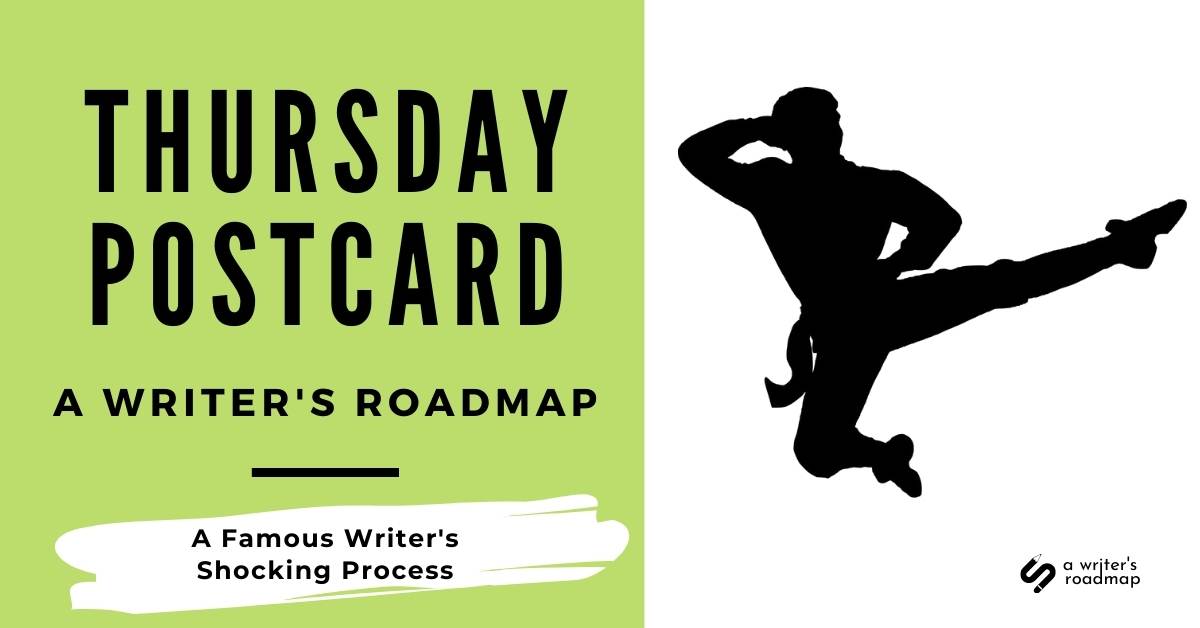Thursday Postcard
The Case of George Saunders
You might have heard of American writer George Saunders, author of Lincoln in the Bardo, which won the 2017 Booker Prize.
Saunders writes a lot of short stories and has published several collections. He’s won a whole bunch of awards for the short fiction as well.
His stories are both moving and hilarious. His novel (his FIRST NOVEL) Lincoln in the Bardo, is both experimental and riveting.
Clearly, George Saunders knows what he’s doing with writing. We might say he’s at the top of his game.
He also teaches creative writing and hosts “Story Club,” a Substack community / newsletter.
For the curious, this is what he looks like (photo by David Shankbone). Or what he used to look like–he’s a bit craggier now:

As part of the Story Club newsletter, Saunders answers questions from writers. Most recently, someone wrote to him asking about his process for writing a story.
It sounds COMPLETELY NUTS!
No judgment intended, here. I just read about it, and I’m still reeling at the amount of work he does.
In a nutshell (:D) Saunders will often start with a “certain swath” of text–a paragraph, or a page.
Then:
“If I feel myself straining (trying to “figure out” what the next thing is or having too many ideas or forcing things in a certain direction) I just stop.”
Then
“I’ll revise that swath over and over, even as I am also trying to add to it, just based on what’s happened in it, and what seems to “want to” come next. As I’m revising it (again, to ear, and for basic logic) it will start to “sprout” plot. As that swath becomes more detailed and specific, something will arise from it – a little tension, or a conflict, or just the promise of something that’s going to happen. (It can be as simple as, for example, the main character mentions, impatiently, that he has to get to work – that might imply that the next scene wants to be him, at work. Voila! Plot.)”
The process he describes can be found here, with greater detail and photographic evidence.
I’d say George Saunders is a “plantser.”
If you’re a pantser–that is, someone who writes by the seat of their pants–that means you just sit in the chair and write whatever you feel like writing.
If you’re a plotter, like best-selling novelist James Paterson (who writes a 50-80 page outline before he does anything else), you plot the story out before you start writing.
I think George Saunders is a plantser. He writes something, he waits for it to sprout tendrils (very plantsy) and then he writes some more. He doesn’t just keep writing if he doesn’t know what the next thing is.
I used to be a pantser, but it’s a wheel-spinning way to write, at least for me. I kept writing scenes I had to ditch, as later plot events made them redundant or irrelevant. It would take me 11 or 12 drafts to write a novel.
So then I became a plotter, but that didn’t work too well either. Personally, if I plot too much I don’t want to write the scenes. I feel like I already know what’s going to happen. I wrote two novels this way and they were about as ho-hum as a novel can be.
What I’ve found is that moving back and forth between writing and plotting keeps me interested without letting me go too far down a dead end in the actual writing.
How to plantser like a dancer

If you’re currently more of a plotter, a good way to welcome plantsing into your life is to add in regular timed freewrites with no agenda except to follow your characters around in a scene and see what they do.
This will let your subconscious help you build a better plot, because what a character wants will propel the action.
This technique can be good for narrative nonfiction or other nonfiction writing too.
If you are currently a pantser, a good way to welcome plantsing into your life is to stop and check your direction every two or three scenes.
Consider the story’s premise and the central dramatic question.
Write to the next “story goal,” or “doorway moment.”
*story goal — the next thing the protagonist is aiming to achieve, do, or experience. Can be big or small.
*doorway moment — another word for turning point–the character goes through a doorway and can never go back to how things were before. Is bigger than a story goal.
Set your course for the next couple of scenes, then get back into just writing. This lets you reduce wheel-spinning and rewrites, or avoid them altogether.
Are you a plantser, a dancer, a plotter or a pantser?
Contact me & let me know–I love your emails!
Cheers,
Pat

